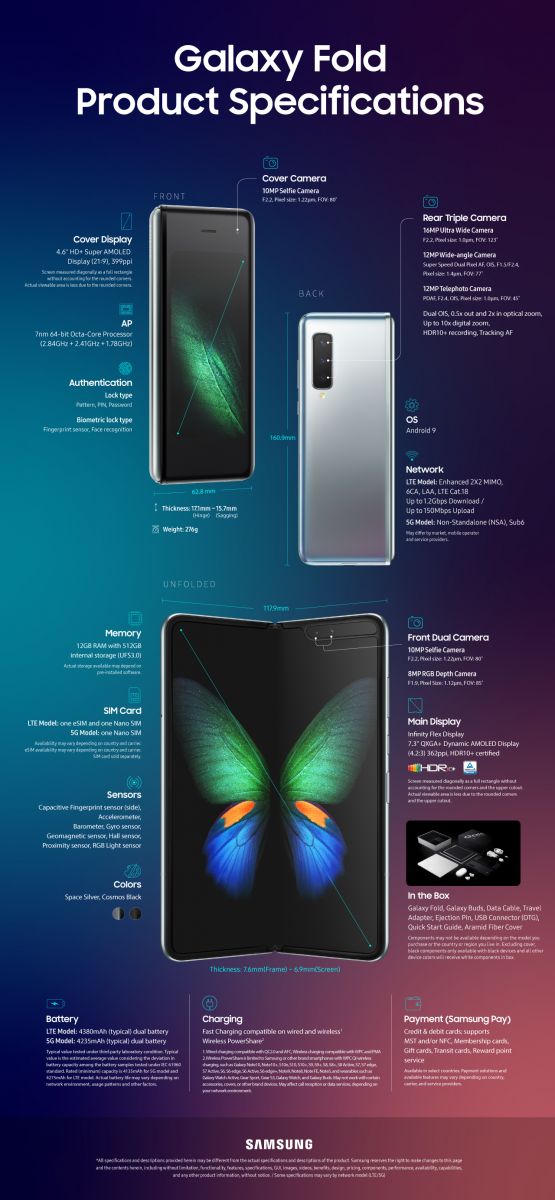Why the Samsung Galaxy Fold is like the Galaxy Note all over again
By Ryan Noik 31 October 2019 | Categories: feature articles.jpg)
I still remember the very first Galaxy Note. A 5.5” screen that dared to be large when the trend was to be small, and that differentiated itself by including a stylus (something those of us early adopters of mobile computing via our Ipaq’s and Pocket PCs swore by).
At first it was ridiculed by some, with other manufacturers scorning the ‘far too big for a smartphone’ category. At least at first, until they saw how successful it was and how well liked phablets were in the market. Then they quickly followed suit, phablets became a category in its own right, and the ‘a smaller phone is better’ mindset was left in the dust.
I say the Galaxy Fold, released locally earlier this month is similar because like the first Note, it sets the tone for a new category of device that bridges the divide between smartphone/phablet and tablet. It too has a new form factor for users to get used to.
More particularly, it combines small - 4.6-inch cover display and, when unfolded, large, with the device boasting, according to Samsung, the world’s first 7.3-inch Infinity Flex Display. Add to this six cameras, 12GB of RAM and 512GB of internal memory, and it certainly seems like no expense has been spared putting top tech into the device.

Aligning the stars
The even more pertinent part about it is not the technology itself, but the fact that once again, the company is aiming to offer users a mobile experience that allows users to do things they couldn’t do with an ordinary smartphone.
Clearly, Samsung has been hard at work lining up services to that end. According to Samsung, its DeX offering is intended to offer more productivity power with a PC-like experience from a mobile device. Its answer to Siri, Bixby has been supported with new personal intelligence functionalities like Bixby Routines to help anticipate users needs. Then Samsung Knox is the security offering that answers the need to keep data and information safe. Samsung Pay addresses making payments with your device, while personal analytics are catered to via Samsung Health, to manage one’s health and wellness,
More recently, the company divulged that it has been working alongside partners and the Android developer community to “design a new and complete foldable user experience”. As part of this process, Samsung explained that it developed a “whole new UX and collaborated closely with Google to provide integrated OS support from Android.”
To this end, it reassured that hundreds of apps have been optimised for the Galaxy Fold, including services from leading partners like Amazon Prime Video, App in the Air, Facebook, iHeartMedia, Microsoft, Spotify, Twitter and VSCO.
It’s all about the experience
Much like the very first Note billed itself as a productivity machine – a purpose which continued throughout the line – the Fold’s purpose is to expand users’ experience, and the value they derive from it.
Justin Hume, the director of Integrated Mobility at Samsung South Africa put it neatly. “We created Galaxy Fold for those that want to experience what a premium foldable device can do, beyond the limitations of a traditional smartphone.”
Like that very first Note, it will no doubt be superseded by its successors, as lessons are learnt, improvements are made, and the foldable phone – and the value it offers - only becomes stronger.
Admittedly, there is hesitation around the adoption of a foldable phone in some quarters. Part of the reason for this is the bumpy start the device had, where media peeled off a protective layer of the device and then reported it breaking.
Another reason may well be its pricetag. Like all new technology, it’s not cheap, coming in locally at above the R40k mark. Despite that though, and the reason why you shouldn’t dismiss the foldable smartphone, is because the Galaxy Fold had no problems selling out in record time when it launched earlier this month. In South Africa. In a poor economy. It begs the question – how well will it do in a booming one, when it has had a chance to mature?
Is this the future?
Returning to our sample of the Galaxy Note, looking back at that very first one launched less than ten years ago, in 2011, and the more recent Galaxy Note 9 (review) and Galaxy Note 10 Plus (review), shows how far the phablet category has come. It's not unreasonable to expect the same from the Fold in the next ten years.
Most Read Articles

Have Your Say
What new tech or developments are you most anticipating this year?



